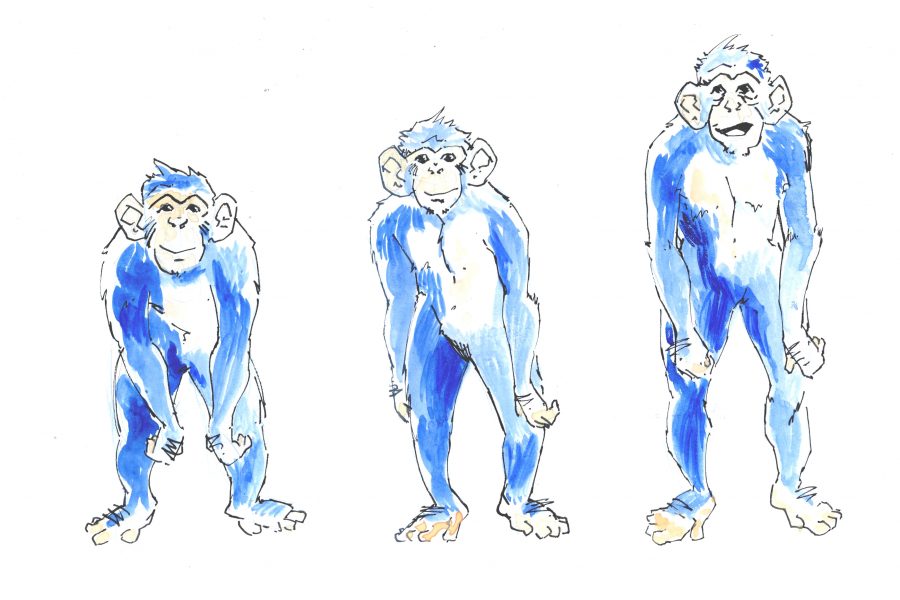While human growth patterns have been extensively studied, it is unclear whether these patterns are shared with other mammals, so UT researchers are using chimpanzees to analyze these growth pattern differences.
Anthropology assistant professor Aaron Sandel is studying growth patterns of adolescent male chimps from Uganda. He plans to compare them with human growth patterns to see if humans develop differently from other mammals.
Human growth is characterized by two spurts, Sandal said.
“Children will grow rapidly until nine years of age when the rate slows down,” Sandal said. “The rate will increase again during puberty in what is called the adolescent growth spurt and last until 16 to 18 years of age.”
Chimpanzees have a similar life history, with rapid growth during infancy and then a gradual slowdown before puberty, Sandal said.
“Chimps reach puberty around the age of nine which is just a few years earlier than humans,” Sandel said. “It is not clear if they have a growth spurt in height during this time, but they do have a growth spurt in mass, meaning that they have an increase in muscle and fat and this can last up until their 20s.”
To measure if they have growth spurts in height, Sandal took limb measurements from a distance using a technique called photogrammetry that involves detecting distances with a camera and lasers.
“In the photo, the lasers act as a scale and through photoshop, the number of pixels corresponding to the length between the lasers is found,” Sandel said. “It creates a length-to-pixel ratio which is used to find the length of limbs.”
Since chimps are endangered and hard to catch, capture and release techniques could not be used, Sandal said.
Graduate anthropology student Rachel Voyt said there were many challenges in the application of this technique.
“We have to account for the fact that chimps we wanted to measure might be sitting in different postures or be in trees,” Voyt said.
Between 2014 and 2015, Sandal and a research assistant obtained pictures of 18 adolescent and young adult chimps to see if there was change in growth from the beginning to the end of the year.
Primate movement can also be studied through analysis of body size.
Liza Shapiro, a professor in the department of anthropology who studies primate locomotion, said the size of the primate affects how they move.
“Primates who spend time in trees vary in movement,” Shapiro said. “Larger ones tend to move beneath branches by hanging, swinging and climbing. Smaller primates move on top branches quadrupedally (moving on all four limbs), or they can leap across (branches).”
No conclusions have been reached yet since data collection and analysis are still ongoing, Sandal said. He said the results will be used to define adulthood in chimpanzees.
There are currently many definitions of adulthood that range from things such as the social behaviors of chimps to their reproductive age.
If chimpanzees are found to not have a growth spurt, evolutionary analyses can be made as to why two phases of growth spurts evolved in and confer advantages to humans. On a broader scale, the study can help enhance our broader understanding of animal and human evolution, Sandal said.
“To understand what it means to be human you have to know what it means to be an animal,”
Sandal said.















